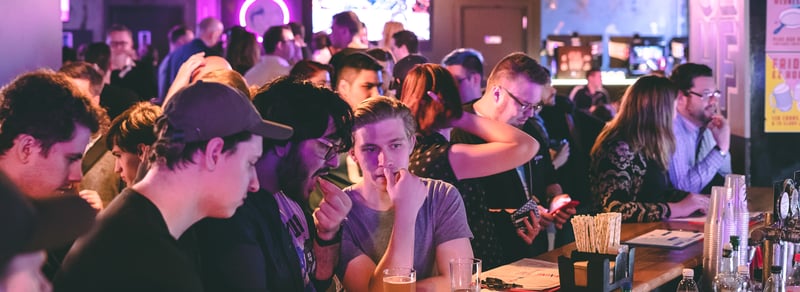Articles
Out of the living room, into the world: how esports is shaking up traditional advertising
Jun 14, 2019Anyone who had a parent scold them for ‘wasting’ time gaming when they were younger should be feeling pretty smug right now.
With top-tier gamers raking in more cash annually than their folks did in a lifetime, those hours spent fine-tuning their skills behind a keyboard or controller have proven a better investment than shares or housing.
According to PwC, the industry is tipped to generate $1.58 billion by 2022. For savvy advertising and marketing executives, access to esports’ young, largely male audience is an almost irresistible lure.
So, what’s the story in Australia?
We’re lagging, but a host of new businesses is spawning to help local brands carve a niche in the lucrative industry.
One venture is Port Melbourne-based BIG Esports. Opened in 2017 to educate and introduce more ‘non-endemic’ (i.e. not gaming-related) brands to the esports sphere, its founder Chris Smith says gamers are a potential goldmine for Australian businesses.
“Esports is the perfect market for most consumer brands to sell into. Your audience are 18-34 year old males with high disposable income,” he said.
“They’re not watching traditional media - they consume it all digitally. The mindset is that everything they need is online.
“That suits advertisers because everything is trackable. It also suits content creators like Jumbla because brands will need video and animated content to engage gamers in this realm.”
A fresh marketing perspective
ESL Australia, which organises and delivers esports events nationwide, agrees that digital is the tool of choice when engaging gamers. The core challenge for new advertising entrants, ESL says, is modifying existing tactics to meet the needs of the market.
“Brands don't need to entirely rewrite everything they’re doing, but they certainly need to understand that the communities they want to engage with may not respond well to the way they have done things in the past,” ESL Sales and Partnerships representative Ben Green says.
“This audience is particularly tech-savvy, so while some aspects of traditional marketing may work with them, brands need to be careful that any message delivered is authentic. If not, they’ll catch on pretty quickly and fail to engage.
“There’s very little point bringing across a campaign that was originally used outside gaming and expecting it to work the same way, because it won’t.”
Blue ocean of opportunity
The gaming industry’s need to focus on digital first digital-first focus wasn’t lost on Jumbla Motion Designer Josh Le Good.
Josh was in Sydney in May to check out the event presentation at the Intel Extreme Masters, a tournament focusing on first-person-shooter Counter-Strike: Global Offensive.
“There were so many promotional opportunities on-site that weren’t taken, and a lot less advertising than I expected,” Josh said.
“When I think of somewhere like the MCG or AAMI Park, there’s a lot of digital signage around the edges of those arenas and on the concourse - places for advertising and motion graphics.
“That may have been a conscious choice based on the market’s preference for online engagement, or something that was forced due to lack of hardware at the stadium, but it was noticeable when sitting in the crowd.”
For Steven Yang, who heads up partnership marketing at Convictus Esports Group, standard marketing approaches simply aren’t effective when targeting gamers.
“Traditional advertisements and traditional marketing strategies don’t work in the modern arena any more. This is especially so when it comes to esports,” he said.
“No-one wants to read a whole page in a newspaper about how good a keyboard is. They want to play with it, feel it, use it.
“Brands in the esports industry really need to get hands-on with the market.”
From the couch to the barstool
BIG Esports Founder Chris Smith predicts the next phase of evolution for Australian esports will centre on providing physical (as well as virtual) spaces for gamers to gather.
“It’s already happening in Melbourne with esports-themed bar GG EZ, which has games on the TVs rather than sports, and gaming-themed drinks and food. Up in Sydney it’s being led by Bankstown Sports Club and a few other bars,” he said.
“As a gamer, you feel like you have a place to go and be social now. There’s a home for people to go and hang out, and these opportunities will only increase over the next few years.”

While esports bars won’t be threatening the status of their sporting counterparts anytime soon, there are huge opportunities for brands willing to engage the gaming market on its own terms.
“There’s a lot of potential and almost everything is trackable, which helps brands assess contribution to the bottom line. It makes everything much more accountable and justifiable,” Chris said. “It’s all about the digital-first mindset with this market.”
Interested in gaming? Jumbla works with studios from RIOT Games to independent producers on content ranging from trailers to cinematics and splash screens. Check out some of our gaming animation projects here.
